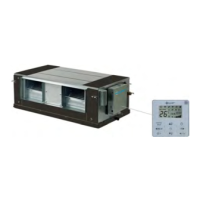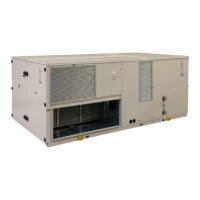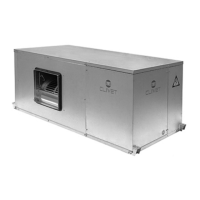M06K40A18-00 CKN-XHE2i 7.1-14.2 25
7.14 Fire alarm: conguration
It is possible to congure the unit behaviour in presence of alarm signal.
Par 1.11 TypeFireMode
The unit cannot be used as smoke extractor.
Any re detection devices built-in the unit must be considered as an auxiliary safety system, and, accordingly, must not be a replacement for
any re detection devices in the room.
7.15 Room pressure calibration
CCK congurations
1. check the doors and windows of the serviced room are closed
2. calibration must be carried out with unit all in recirculation
3. view the status on the display: Pf2 RETURN AIR PRE
4. wait for the pressure value to stabilise and take note of the value
5. to keep the room at neutral pressure, memorise the value of the read pressure in 5.07 SetPAmb
6. to maintain the room in overpressure, memorise a higher value respect to that detected
7. to maintain the room in depression, memorise a lower value
7.16 Start-up report
Identifying the operating objective conditions is useful to control the unit over time.
With unit at steady state, i.e. in stable and close-to-work conditions, identify the following data:
•
total voltages and absorptions with unit at full load
•
absorptions of the dierent electric loads (compressors, fans, pumps etc)
•
temperatures and ows of the dierent uids (water, air) both in input and in output from the unit
•
temperature and pressures on the characteristic points of the refrigerating circuit (compressor discharge, liquid, intake)
The measurements must be kept and made available during maintenance interventions.
7.17 2014/68/UE PED directive
DIRECTIVE 2014/68/UE PED gives instructions for installers, users and maintenance technicians as well.
Refer to local regulations; briey and as an example, see the following:
Compulsory verication of the rst installation:
•
only for units assembled on the installer’s building site (for ex. Condensing circuit + direct expansion unit)
Certication of setting in service:
•
for all the units
Periodical verications:
•
to be executed with the frequency indicated by the Manufacturer (see the “maintenance inspections” paragraph)
